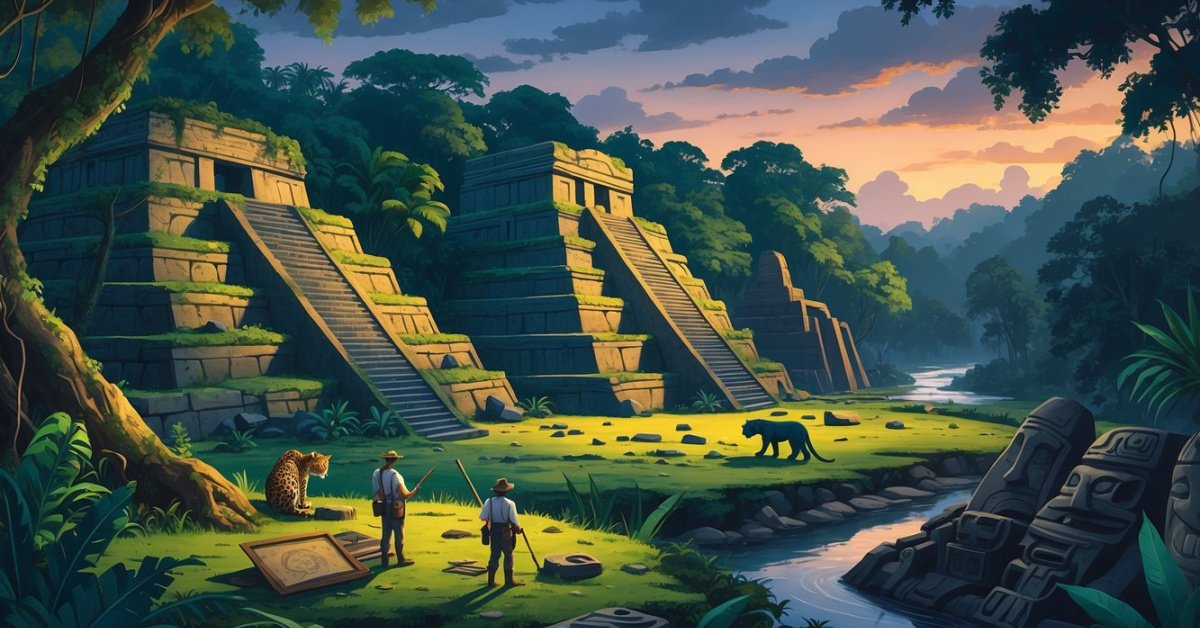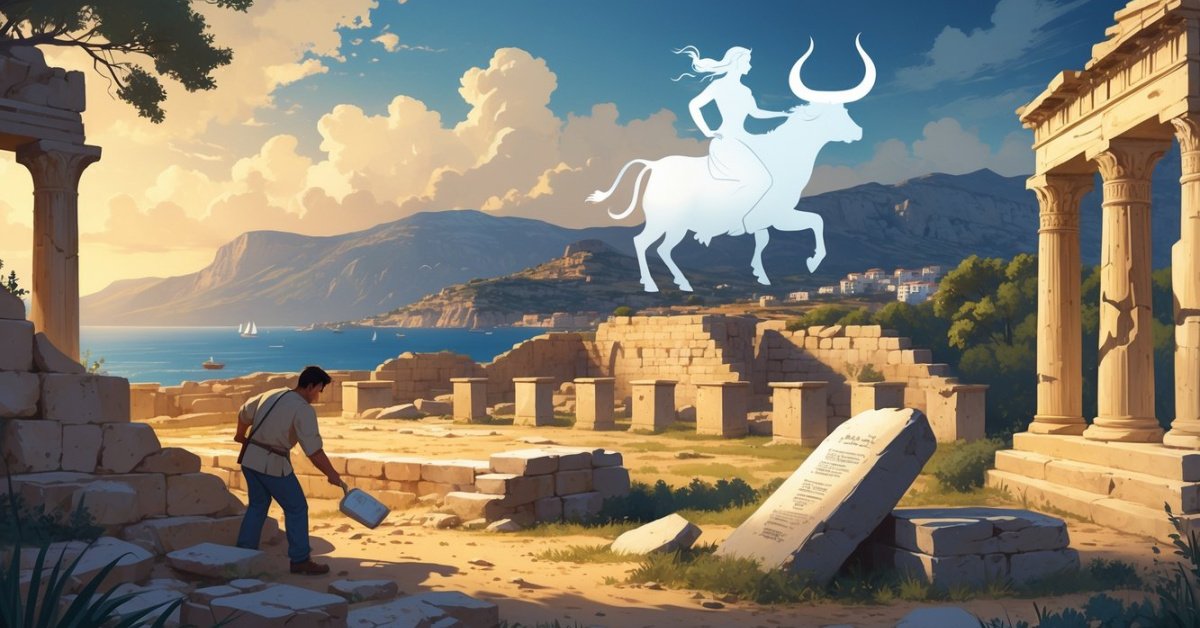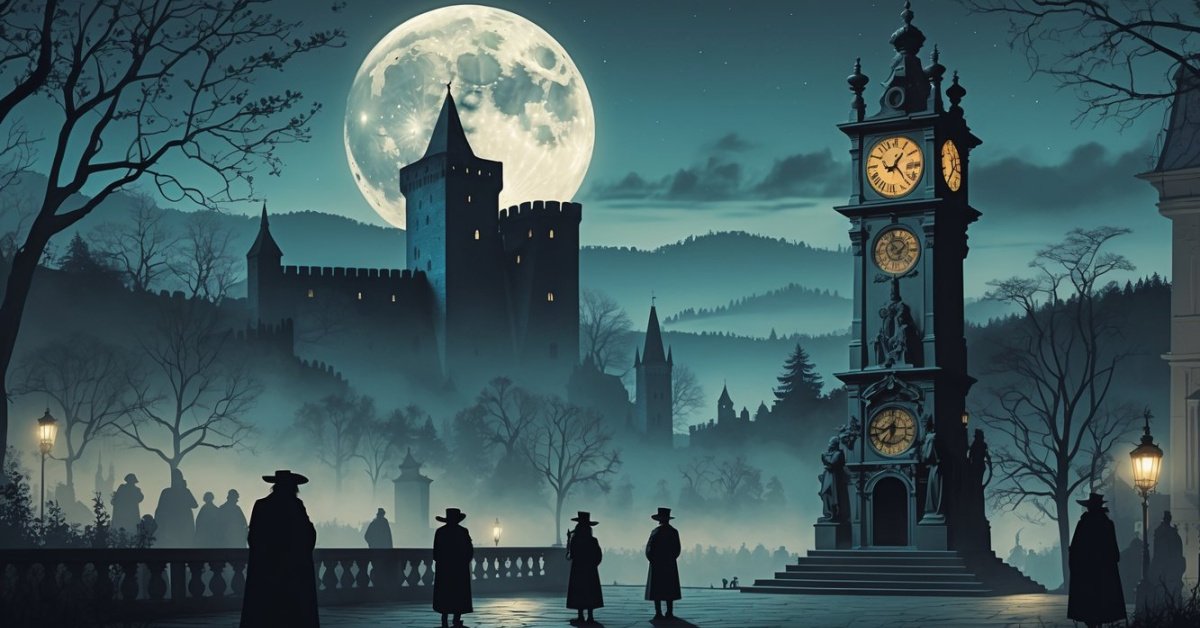Belize is a country filled with amazing secrets from the past. The land is home to ancient Maya cities, mysterious ruins, and hidden sites that keep their stories locked away.
Some of the biggest historical mysteries in Belize include puzzling temples, lost civilizations, and unexplained artifacts left behind in the deep jungle.
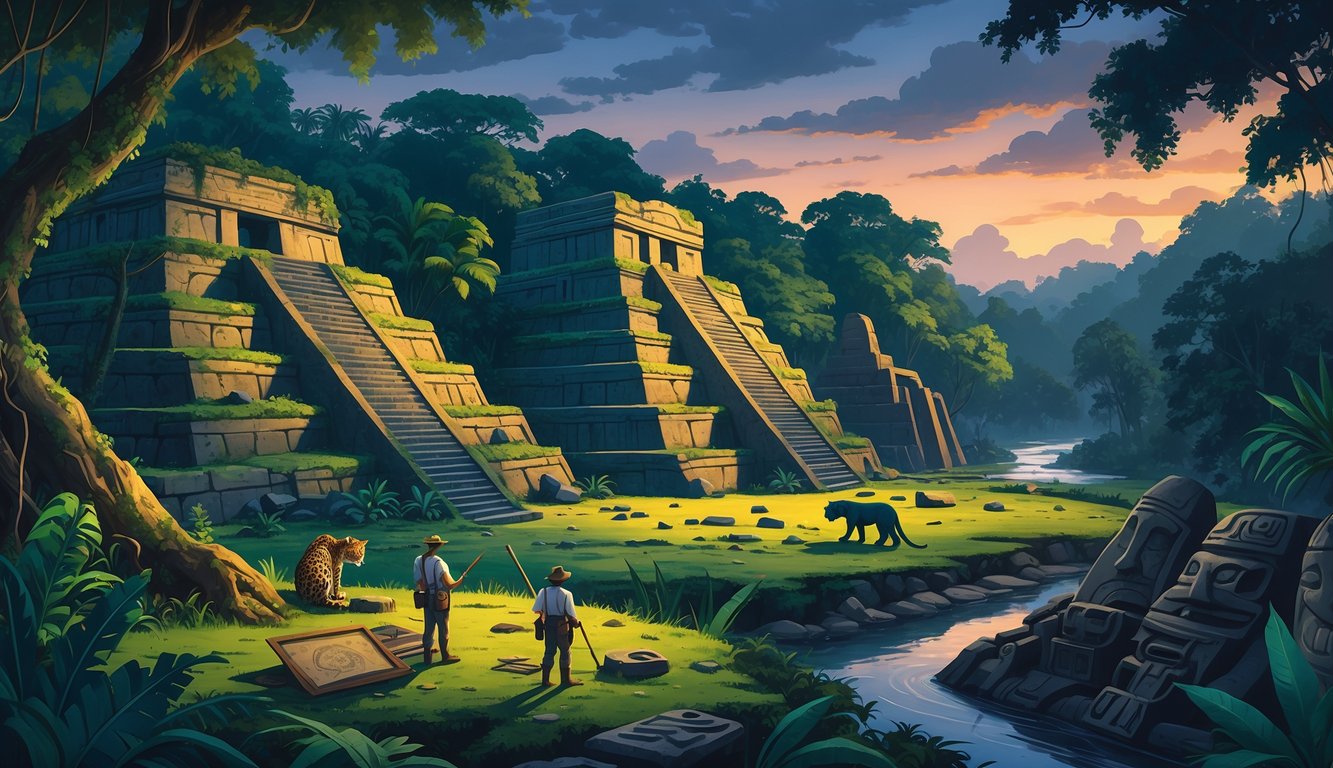
Visitors can walk through places like Caracol, the largest Mayan ruin in Belize. Massive stone structures and legends still hide many unanswered questions.
From the dense forests to the famous Blue Hole, Belize offers a glimpse into ancient times. Mysteries are waiting to be discovered.
Each archaeological site in Belize has a story. Every visit reveals a piece of the puzzle that makes Belize unique for anyone interested in the secrets of the past.
The Lost Cities of the Ancient Maya Civilization
Many ruins in Belize and Central America point to the grand cities built by the ancient Maya civilization. These cities are famous for their step pyramids, advanced roads, and complex society.
Much remains unknown about why these cities vanished.
Disappearance of City-States
The Maya civilization included city-states, each with its own king and government. Important centers like Caracol and Xunantunich controlled large areas, traded with neighbors, and built impressive monuments.
Archaeologists have found over 400 ancient Maya cities, many buried in jungle and connected by “superhighways.” These wide, straight roads are the earliest known motorway system.
Some city-states thrived for hundreds of years, but people eventually abandoned them for reasons still not fully understood. Researchers have mapped these lost sites.
Common theories for the disappearance include wars, disease, and changes in trade. Drought and crop failures may have struck some cities especially hard.
The way entire city-states lost all their people and power remains one of the greatest puzzles of Maya history.
Collapse of the Maya Civilization
By the late 800s and early 900s, many Maya cities stood empty. The great civilization entered a period of collapse.
This change happened over decades. Large cities stopped building major monuments, and stone carvings showing rulers and battles became rare.
There is no single reason for the collapse. Instead, a mix of internal and external pressures likely caused it.
Long droughts may have made farming very hard. Overuse of land and resources could have caused food shortages.
Warfare between rival city-states often destroyed villages and weakened governments. Some experts believe environmental problems played a main role, while others point to social conflict or outside threats.
Despite all the research, the real reasons remain unclear.
The Mysteries of Population Growth
During their peak, Maya cities in Belize and Central America supported huge numbers of people. This rapid growth pushed more people into cities and the surrounding farmland.
Estimates suggest millions lived in Maya territory at once. Crowded areas made food harder to produce.
Archaeologists still debate how these populations grew so quickly. The Maya used advanced farming systems, like raised fields and reservoirs, but these may not have been enough during droughts.
Sudden drops in population are seen in the ruins. These suggest massive migrations or losses.
Some cities relied on long-distance trade and strong political control to support so many people. When these systems broke down, the population may have crashed.
The link between population growth and disaster remains one of the most fascinating aspects of ancient Maya civilization.
Enigmatic Archaeological Sites and Ruins
Belize is filled with ancient Maya mysteries hidden among its thick jungles. Visitors can explore towering ruins, strange legends, and clues that link Belize to great Maya cities in neighboring countries.
Uncovering Caracol Maya Ruins
Caracol is the largest known Maya archaeological site in Belize. It was once a major city dating back to around 1200 BC.
Caracol sits deep within the Chiquibul Forest Reserve. Its discovery and excavation are true adventures.
The site features the massive Caana, or “Sky Palace,” which rises about 140 feet. This makes it one of the tallest man-made structures in Belize.
The palace complex contains more than 100 rooms and several tombs. Caracol’s ancient causeways suggest it had far-reaching trade and political power.
Archaeologists have uncovered grand plazas, stelae with hieroglyphic carvings, and signs of advanced astronomy. Many mysteries remain about why the city was abandoned over 1,000 years ago.
Today, Caracol draws both researchers and curious travelers wanting a glimpse into Belize’s ancient Maya world.
The Secrets of Xunantunich
Xunantunich, meaning “Stone Woman” in the Yucatec Maya language, is one of the most accessible and intriguing archaeological sites in Belize. Located west of San Ignacio, visitors cross the Mopan River by hand-cranked ferry to reach the site.
The highlight here is El Castillo, a pyramid standing about 130 feet high. From the top, people can see the Guatemala border and the lush Belize River valley.
Carvings on El Castillo’s frieze show Maya gods and symbols, but no one knows exactly what some mean. Legends say the ghost of a woman dressed in white appears at night, adding to the mystery.
Xunantunich served as a ceremonial center. It likely played a key part in Maya politics and trade.
The full story of its rise and fall remains unsolved.
Tikal and Calakmul Connections
Belize’s ancient cities did not exist in isolation. Archaeological evidence links places like Caracol and Xunantunich with greater Maya cities such as Tikal in Guatemala and Calakmul in Mexico.
Caracol fought wars with both Tikal and Naranjo. Records carved on stone monuments show shifting alliances and rivalries.
A notable find was the discovery of hieroglyphic texts revealing Caracol once defeated Tikal. This changed the region’s power balance.
Artifacts found at Belizean sites also show trade with Tikal and Calakmul. Researchers continue to study these connections.
Their work helps explain how ancient Belize was once part of a much larger Maya civilization network. Understanding these links provides important clues about life, politics, and culture in the past.
The Sky Palace: Caana’s Untold Stories
Caana, known as the Sky Palace, stands as the tallest ancient building in Belize. Its massive pyramid structure and hidden rooms continue to puzzle researchers and visitors.
Mystery of Its Architecture
The Sky Palace, or Caana, rises over 43 meters above the jungle floor. This pyramid contains multiple levels, with wide staircases leading up to palaces and temple rooms at the top.
Archaeologists discovered that Caana has four palaces and three temples built on its summit. Its design combines sharp angles, steep stairs, and large platforms.
Builders used hand-cut limestone blocks, fitted tightly together without mortar. People still wonder how ancient Maya builders managed to move and stack such heavy stones.
The way the rooms are hidden deep inside the structure adds to the puzzle. These inner spaces may have protected elite families or stored important treasures.
Learn more about the architecture of the Sky Palace.
Key Features of Caana’s Architecture:
| Feature | Details |
|---|---|
| Height | About 43 meters (141 feet) |
| Number of Palaces | Four |
| Number of Temples | Three |
| Material | Limestone blocks |
Beliefs Behind Its Construction
Caana was more than just a building—it was deeply tied to Maya beliefs and power. Ancient Maya rulers used its height and grand design to show their connection to the gods.
Its name, which means “Sky Place” or “Sky Palace,” shows how important the building was for ceremonies. Priests and rulers may have climbed to the top to perform rituals, believing they were closer to the heavens.
This allowed leaders to show both religious and political power. Ceremonies held high above the ground likely included offerings, dances, and prayers.
Large plazas around Caana suggest many people could gather to watch these events. Evidence of tombs and altars hints at the importance of life, death, and afterlife in the beliefs tied to the structure.
For more, see Belize’s tallest Maya pyramid.
Lost Arts and Intricate Carvings
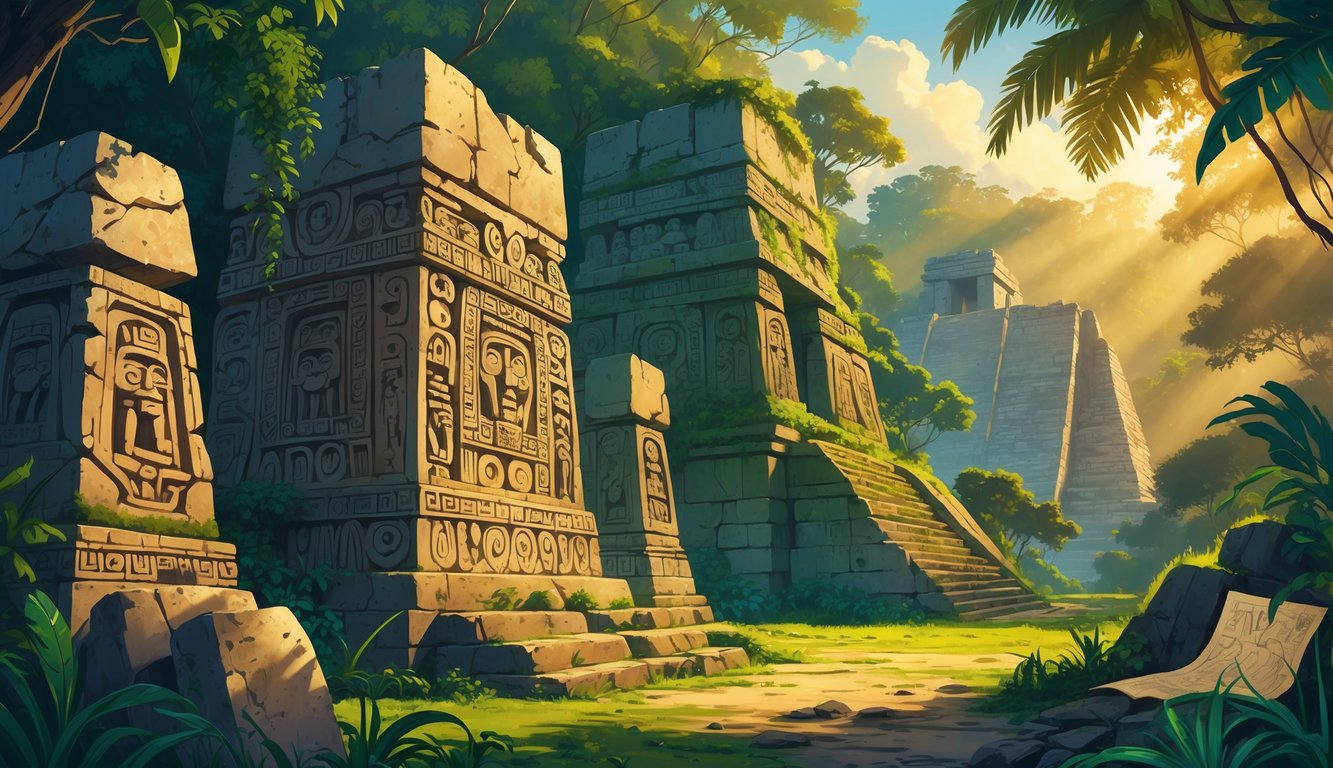
Ancient Belize is known for its impressive carved stone monuments and decorated pottery. These works are windows into Maya culture and reveal beliefs, history, and artistic skill.
Interpreting Maya Stelae
Maya stelae are tall stone slabs covered in detailed carvings and glyphs. Many stood in city centers to remember important rulers or events.
The carvings often show noble figures wearing elaborate clothing and headdresses. Next to them, glyphs tell stories about victories in war, royal births, or alliances with other cities.
These carvings help historians figure out who ruled each site and which events shaped Maya society. Some sites, such as Lamanai, have well-preserved stelae.
These stelae are valuable for studying how art and history blend in Maya culture. For more about Lamanai’s artifacts and carvings, visit this guide.
Symbolism in Pottery and Carvings
Maya pottery is not just for everyday use. Many pieces are covered in patterns and symbols that show animals, gods, and scenes of daily life.
Common designs include jaguars, maize, and serpents, all important in Maya beliefs. Pottery was used during feasts, ceremonies, and sometimes placed as offerings in temples.
At sites like Caracol, carved patterns reveal how Maya art tells stories about the people and their world. Discover more about pottery and ancient culture at Caracol.
These artistic traditions form a key part of Belize’s cultural heritage. Today, they still inspire curiosity and respect for the skills of Maya artists.
Mayan Rituals and Human Sacrifices
Maya ritual practices often included bloodletting and human sacrifice. Caves and temples across Belize have revealed artifacts and skeletal remains that help explain these ancient customs.
Purpose of Ritual Practices
The Maya believed that keeping the gods satisfied was necessary for survival. They practiced ritual bloodletting and, in more serious times, human sacrifices.
These acts tied directly to the cycles of agriculture, seasons, and social order. Sacrifices served as offerings to ensure rain, healthy crops, and protection for their cities.
Nobles and even kings sometimes joined in, offering their own blood or the lives of captives. When crops failed or during moments of crisis, human sacrifices became more common, especially between 750-900 AD during the decline of major cities.
Belief in sacrifice connected deeply to their myths about creation and the afterlife. The Maya saw caves as entrances to the underworld, making them important places for rituals.
For more on these beliefs, see this overview of Mayan sacrificial practices.
Archaeological Discoveries of Sacrificial Sites
Archaeologists have found evidence of ritual sites in caves and ruins across Belize. One famous discovery is the “Crystal Maiden,” a skeleton found deep inside Actun Tunichil Muknal Cave.
This site contained remains believed to be sacrificial victims, as well as pottery and other offerings. Many Maya cities were built near cave systems, as they viewed these locations as sacred portals to Xibalba, the underworld.
Bones, tools, and pottery have been found within these caves, confirming their use for rituals and sacrifices. The transition from agricultural offerings to human sacrifice sites happened during a period of social and environmental stress.
A table of key archaeological finds in Belize:
| Site | Discovery Type | Significance |
|---|---|---|
| Actun Tunichil Muknal Cave | Human skeletons, pottery | Example of ritual sacrifice |
| Western Belize Caves | Bones, tools, ceramics | Ritual offerings to the gods |
| City Ruins in Belize | Burial sites, artifacts | Evidence of ceremonial use |
More information about sacrifices in the caves of Belize can be found here.
The Belize River: Lifeline and Enigma
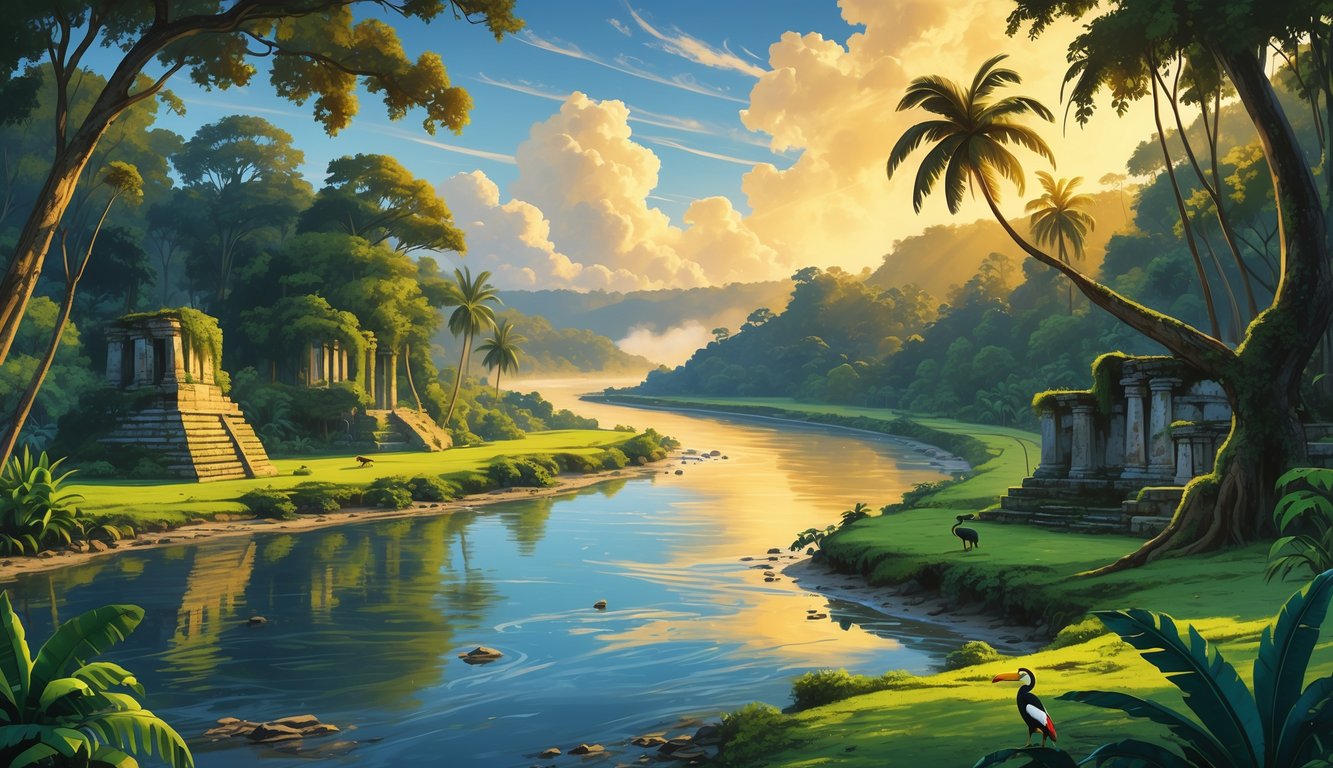
The Belize River cuts through the center of Belize. It shapes the land and supports the people who live near its banks.
Its path connects jungle, Mayan ruins, and some of the country’s most important historical sites.
Trade and Communication Networks
For centuries, the Belize River served as a main route for moving goods and messages. Mayan traders paddled along the river, transporting items like jade, cacao, and ceramics between cities such as Xunantunich, El Pilar, Cahal Pech, and Altun Ha.
These cities sat close to the water, allowing for easy trade and fast travel. Later, British settlers used the river to transport timber, including logwood and mahogany.
Boats filled with lumber made their way to the coast and out to the Caribbean. The river helped communities stay connected, even when roads were scarce.
This made the Belize River an important link in both local and international networks. Today, many stretches of the river still flow past ancient ruins and thick jungle, showing how it once united cultures and shaped Belizean history.
Its importance can be seen in details along the banks and in records left by explorers, traders, and archaeologists. For more history about the river’s use in ancient and colonial times, see how the Belize River served as a major trading route.
Riverside Settlements and Their Fate
Villages and towns grew along the Belize River over hundreds of years. The ancient Maya built large settlements, and their ruins are still visible today in the rainforest.
These sites show signs of bustling life—roads, plazas, and canals that supported farming and fishing. Many of these settlements suddenly changed or disappeared.
Archaeologists are still trying to learn why some cities flourished while others declined. Environmental changes, wars, and shifting trade routes may have played a part.
Some of the greatest mysteries are hidden beneath layers of soil and thick vegetation. Explorers still find new ruins or remains where past riverside communities once thrived.
Water levels and erosion also erase evidence, making it a long puzzle for modern researchers. Learn more about how the Belize River Valley is lined with ancient ruins and rainforest and the questions that still surround them.
Cultural Tapestry and Lost Civilizations
Belize stands out with its unique blend of ancient ruins, diverse peoples, and deep-rooted traditions. Its past is shaped by lost civilizations, Caribbean neighbors, and a mix of indigenous and colonial cultures.
Integration with the Caribbean
Belize is the only English-speaking country in Central America, yet it is closely tied to the Caribbean region. Its people share strong cultural connections with countries like Jamaica, Trinidad, and Barbados.
Music, food, and festivals in Belize reflect this bond. Celebrations such as Carnival and Garifuna Settlement Day highlight Caribbean influences.
Dishes like rice and beans, stewed chicken, and plantains are common at family gatherings throughout the country.
Languages Spoken:
- English (official)
- Kriol
- Spanish
- Garifuna
Belize is also a member of CARICOM, the Caribbean Community. This partnership connects it with other island nations, giving its cities and villages a lively spirit.
For more, see how Belize’s history and culture are shaped by Caribbean ties.
Blending of Indigenous and Colonial Influences
Long before European contact, the Maya built impressive cities and left behind mysterious ruins throughout Belize. Over 600 known Maya sites fill the landscape, including Caracol, Xunantunich, and Lamanai.
When Europeans arrived, they brought new customs, religions, and languages. The Spanish and British both changed Belize’s laws, architecture, and holidays.
Indigenous Maya traditions merged with British colonial practices to form today’s diverse society. Daily life includes a mix of Catholic, Protestant, and Maya spiritual beliefs.
Crafts, music, and stories blend elements from both cultures. Learn more about the lost civilizations and archaeological history of Belize.
The Golden Age of Piracy in Belize
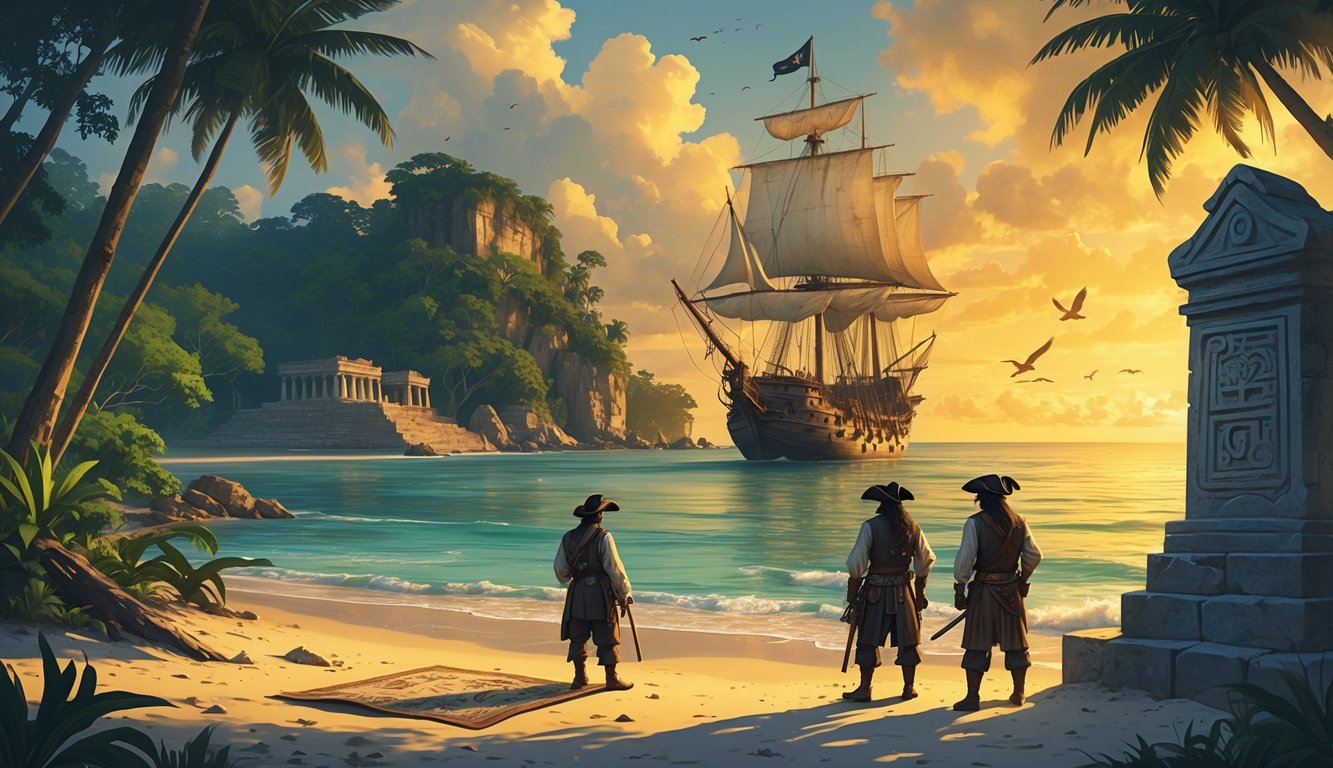
During the 17th and early 18th centuries, pirates played a big role in shaping Belize’s history. The Caribbean coastline, hidden coves, and sparse settlements made the area perfect for pirate activity.
Pirate Hideouts and Lost Treasure
Belize quickly became a famous pirate haven during the Golden Age of Piracy. The long coastline offered many secret spots for pirates to hide their ships and stolen treasure.
Dense mangroves, rivers, and small islands near present-day Belize City gave pirates a place to lay low and avoid capture. Pirates used Belize as a base to strike Spanish ships loaded with gold and silver from the Americas.
There are legends about hidden treasure buried along Belize’s shores or left behind on its many cays. Some treasure hunters still search for these riches today, hoping to find relics from the days when pirates ruled the Caribbean.
Pirate attacks and settlements led to ongoing conflict between Spain and England, which shaped Belize’s early history and borders. Local stories often tell of daring escapes, secret codes, and loot hidden beneath the sand or in underwater caves.
Legendary Figures of Belize’s Coast
One of the most talked-about names linked to Belize’s pirate history is Peter Wallace. Some believe he was the founder of Belize, while others think his story could be more legend than fact.
Many types of pirates passed through or settled in Belize, from ruthless buccaneers to men looking for a fresh start. These figures often teamed up with woodcutters and settlers who later formed the early communities near Belize City.
Important facts:
- The area’s lack of Spanish control gave pirates lots of freedom.
- Pirates helped shape Belize’s ethnic and cultural history by mixing with local groups and other settlers.
- Stories of their bravery and greed live on in Belizean legends, sometimes blurring the lines between real history and tall tales about the Caribbean.
Modern Excavation and UNESCO World Heritage Sites
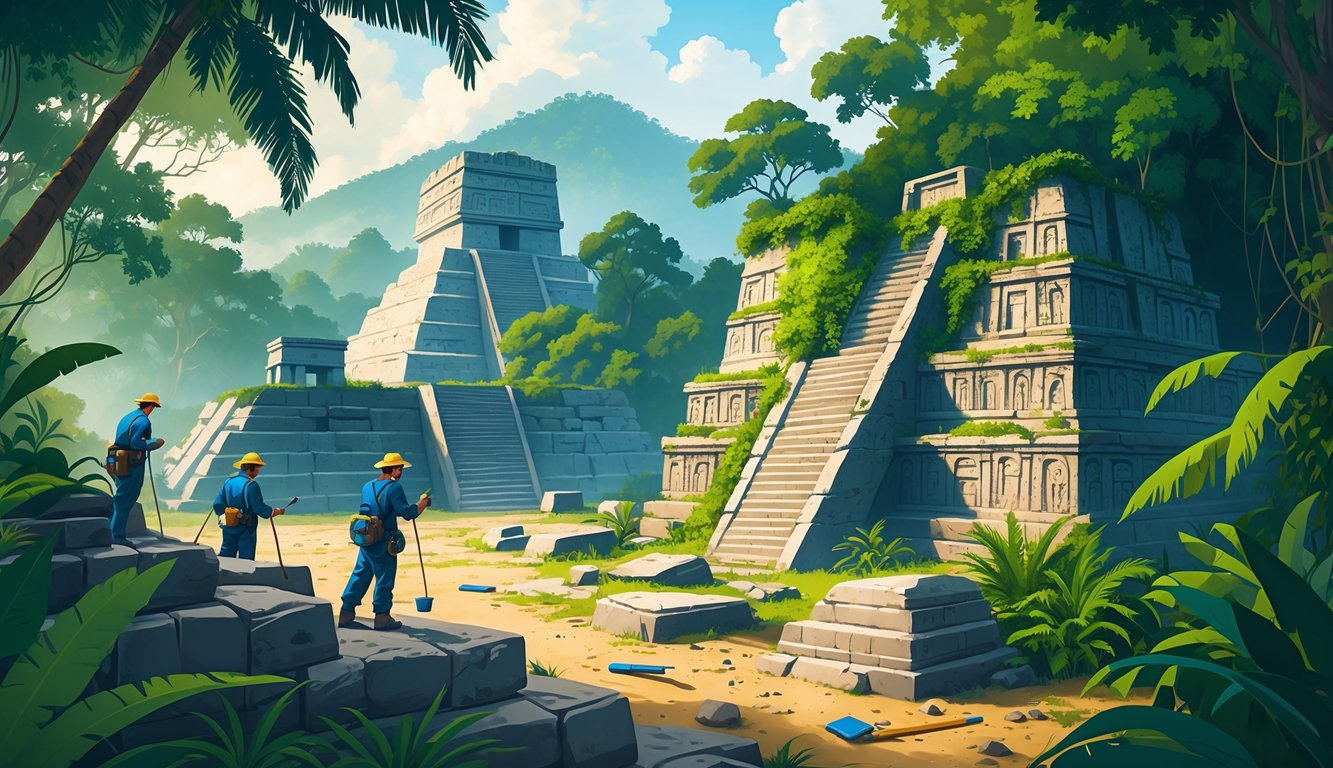
Belize’s rich history is revealed through ongoing excavation at Mayan ruins and protected sites. The country has one designated UNESCO World Heritage Site.
Archaeologists continue to make important discoveries.
Challenges in Preservation
Preserving Belize’s archaeological sites is complex. Tropical weather causes erosion and sometimes damages ancient structures.
Heavy rains and jungle growth can quickly cover newly uncovered sites. Human activity is another challenge.
Looting and vandalism threaten fragile ruins like Xunantunich and other Mayan cities. Developers often want land for tourism or construction, which puts famous sites and new finds at risk.
Strict regulations from local and international agencies help protect these places. UNESCO works with Belize’s government to keep the country’s only World Heritage Site on the protected list.
More about Belize’s nomination status and its lone site can be found on the List of World Heritage Sites in Belize page. Community engagement helps, too.
Local guides and villages often support conservation by watching for illegal digs and reporting problems.
Impact of Recent Discoveries
Recent archaeological discoveries are changing what people know about Belize’s past. Finds from ongoing excavation projects have given new information on daily life, trade, and ceremonies during the Mayan period.
Technology has played a big part. Researchers use drones, 3D mapping, and specialized scanning to identify lost buildings and tombs hidden under the jungle.
These tools help uncover sites faster and with less damage. Every discovery adds to Belize’s story.
Some finds, like new tombs or artifacts, attract researchers and tourists from around the world, which can help fund more work. However, these discoveries also make preservation efforts more urgent, as more sites need protection and care.
Belize’s Place Within Central America’s Ancient Mysteries
Belize sits at the heart of the ancient Maya world, surrounded by impressive ruins and mysterious relics. Its archaeological sites link closely with famous Mayan landmarks in Guatemala and Mexico.
These sites share deep cultural roots.
Relation to Neighboring Mayan Sites
Belize is home to over 600 Mayan sites scattered throughout its dense jungles and valleys. The largest is Caracol, once a powerful city that rivaled neighboring Tikal in size and influence.
Caracol formed alliances and fought wars against centers like Tikal and Calakmul, shaping the balance of power across the region. Other key sites in Belize include Xunantunich, Altun Ha, and Lamanai.
Archaeologists have found many similarities in construction styles, artwork, and inscriptions between these cities and major centers in Guatemala and Mexico. Trade routes passed through Belize, moving goods like jade, obsidian, and cacao between cities.
These connections show how Belize played a major role in the larger story of the Maya civilization. Archaeological finds help researchers link Belize’s sites to those outside its borders, offering clues to the secrets and historical events shared across Central America.
Shared Myths and Legends
Many legends in Belize come from the Maya people of Guatemala and Mexico. Stories about gods, the underworld, and heroes appear in both old Maya texts and modern oral traditions.
Key figures like the maize god and the rain god show up in myths throughout Central America, including Belize. The famous Popol Vuh tells stories that connect with Belize’s ancient sites.
Rituals, ball games, and beliefs about the afterlife appear in the layout and carvings at Belize sites. Sites like Tikal and Calakmul share these features.
Local legends often mention hidden caves and sacred pools. People believed these places were gateways to the underworld.

